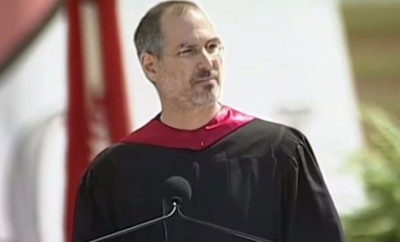
Coaching Elite Athletes to “Zone”
“ The best and fastest way to learn a sport is to watch and imitate a champion ”
Jean-Claude Killy Alpine Skier and Olympic Champion.
Editors Comments
This article highlights a new book by Tim Goodenough and Mike Cooper of South Africa, a book entitled In the Zone that grew from interviews with 17 top sports people using the formulations of Neuro-Semantics® and Meta-Coaching®. As a modelling of the best, it provides fabulous insights not only into top performances by athletes, but by business people and, in fact, all of us. We are delighted to welcome Tim and Mike as new authors to Actualise…
Michael Hall and Michelle Duval
Bridging the Gap
Why is it that amateur athletes can compete like champions one day, and at the same time champions can often compete like amateurs? Pick any sport you like, and you will be able to identify those athletes with a high degree of consistency and consequently success, and those athletes that have incredible natural talent – yet never reach the same levels of achievement. In most sports, training technique, fitness, nutrition, skills development, strength and speed are at a similar level as for elite athletes – very little separates the top athletes, very little on a physical level that is. The differential between champions and potential champions is universally acknowledged as being a mental difference. What is not universally acknowledged is the question of what that difference is, and how do you bridge that gap?
Three and-a-half years ago we set out to answer that question. We decided to focus our research on the experience that some athletes have, of being in their “genius” or flow state. the state where they are performing at or beyond their potential. In the sporting world these athletes are spoken of as being “in the zone”. By interviewing some of South Africa’s top athletes who have experienced being in the zone at some stage of their career, we were able to create a structure of their collective experience which allows us to answer those difficult questions such as “What is Big Match Temperament?” and “What is mental toughness?”
There will never be a one-size-fits-all strategy for coaching athletes. What we were looking for while we interviewed these elite athletes were the trends that they had in common. We originally did not realise the hierarchical nature of the skills required for zoning, however once we have identified which skills were foundational we found that when coaching athletes to develop these skills they began to “Zone” more frequently in training, even without having developed the zoning skill itself.
So to be able to enter into the “zone” regularly several things are needed. Firstly a strong foundation. These are the skills as discussed in the book such as a having a strong work ethic being internally referent, differentiating between confidence and esteem, being resilient, understanding and performing with one’s highest intentions, managing anxiety and confidence, quality mental preparation, meta-detailing, engaging in meaningful and high quality practise and being un-insultable coupled with being an active identity shaper.
The Zoning Pyramid

By placing the zoning skills in a pyramid we are aiming to demonstrate how the skills are interrelated. When we started our research it was all about “zoning,” the top of the pyramid. How does an athlete get there? As we interviewed more athletes we begun to realise that although being in the zone might only last 9.8 seconds as an example in a 100 metre race, the ability to zone at such an important moment required a lot more mental development than we had first imagined, in fact a total of 11 other skills were required for that level of performance. Due to the way these skills often combine to create other benefits, it was important to understand where to start developing skills, and how the skills are related to each other.
Some skills you would find difficult to develop if some of the lower skills were not in place. And so we designed a pyramid where each level rests on those below. To reach the top you need to climb the lower levels.
How do you enter the Zone?
Nearly all the athletes and coaches we spoke to thought of the zone as being elusive and something that happens purely by chance. They described the “Zone” as being a time of flow, a time when things seemed easy and you never feel rushed, a place of calm.
We began looking at the process that allows these players to get into the zone. Thought and behaviour are not random, but tend to occur in patterns or processes. By repeating a pattern of thought or behaviour it eventually becomes a learned behaviour; sometimes in the form of a habit, and other times in the form of a perceptual filter, or thinking style.
We sought to find the patterns that make up the thinking and behaviour when in the zone. We used a process called modelling. Modelling says you don’t need to develop a skill from scratch. There are people out there who are experts in what you want to do. If you can unpack (explore and discover) their thinking processes, you can begin to replicate the behaviour.
Level 1: Being skills and foundation
The first layer of the pyramid is work ethic. Nothing happens unless you work smart and hard in the sports world. It is the foundation as every other skill takes effort and commitment to build and apply.
The reason for the Red Arrow on the side of the pyramid is that whilst a strong work ethic is the most critical skill, it is from the ‘performing from ones highest intentions’ skill that athletes get their motivation and energy to drive their strong work ethic and the development and use of the other skills in the pyramid.
The next skill is the ability to align with your highest intentions. Athletes who play for a reason that is bigger than themselves and know what this is find they have the drive and energy to keep going when the going is tough.
Being internally referent is one of the more controversial skills. We found that elite athletes had a strong feeling of being in control of their own authority and knowing for themselves what needed to be done, as well as being able to operate within a team effectively. Athletes with this skill are often described as hard headed as they value their own opinion about themselves more than others, including the coach, fans and media.
The final skill at the foundation level is the ability to separate self-confidence from self-esteem. In sport too many players find themselves in an emotional roller coaster as their value is often linked to their performance on the field.
These skills are interesting as they are not just foundational skills for elite athletes but are foundational skills for every person who wants to succeed in life. We have found in our executive coaching practices that these four skills are also there in highly successful business men and women.
The being skills are at the bottom of the pyramid, and once they are in place, the doing skills have a strong foundation to develop from.
Level 2: Career Skills
The next three mental skills are more specific for athletes. They will distinguish your committed athlete from the weekend sportsmen. But they take effort and work to practice till they are mastered. The skills are resilience, the ability to manage anxiety and confidence, and being un-insultable.
Level 3: Advanced athletes skills
Athletes who have developed skills at this level will typically be above average performers. Advanced athletes require an incredible amount of discipline and effort, the challenge for athletes at this level is to make the type of total personal commitment and sacrifice that is required. These skills are meaningful and high quality practice, quality mental preparation, and the ability to meta-detail.
Level 4: Elite athlete’s skills
Now the athlete can congruently and believably create an identity for themselves as an elite athlete and champion. Some never make the jump from level 3 to 4 where they can truly in their hearts see themselves as world champions. An athlete doesn’t need to have a world ranking as “No.1” or even needed to have won the world championship to have this identity; he just needs to be “No. 1” in his own mind. With all these levels in place the athlete can create a space for himself where he can zone regularly and at wil. This is further supported by the athlete being coached how to turn on zoning even when under the most immense pressure.
Perceptual Positions
This is the other side of the pyramid. It is not a skill everyone will have to develop, but anyone who plays in an individual sport or who is a decision maker in a team will need it to be truly effective. In fact, if you fall into this category and don’t have this skill it will stop you being able to perform optimally.
We have created benchmarks for all 13 of these skills and feel that perhaps for the first time coaches and athletes can measure the mental skills and have practical guidelines for improvement. The benchmarks are based on behavioural indicators so that there can be a shared understanding of where an athlete is in their development between the coach, the athlete and any other stakeholder.
Aside from the benchmarks, we have also included in the book Neuro-Semantic exercises that will allow readers to develop many of the mental skills themselves.







